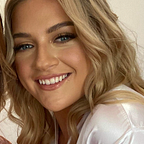11 Writing Lessons I Learnt from Masterclass
11 Writing Lessons I Learnt from Masterclass
Last year I decided to treat myself to a Masterclass subscription. I’d been pondering the idea for months, and because it was constantly in my thoughts, I bit the bullet.
For those who don’t know, Masterclass is a platform where (for a tiny fortune) you are given access to tutorials, workbooks and lessons from some of the greats. The categories covered include Film, TV, Music, Entertainment, Writing, Culinary Arts, Business, Politics, Design, Photography, Fashion, Sports, Science, Tech and Lifestyle.
I personally signed up specifically for the Writing category, as the authors present in the tutorials are some of my idols and favourites. From Dan Brown teaching you how to write thrillers, to Margaret Atwood teaching creative writing, the hardest part of Masterclass for me was deciding where to begin.
As my yearly subscription comes to an end, below are 11 lessons I learnt from some truly amazing writers.
1. What I learnt from Dan Brown
On: Creating Suspense
Use the three Cs to create suspense — contract, clock and crucible.
The contract refers to the implied promise you make to the reader (I know something you don’t know!).
The clock refers to time pressures added to your character’s problems in order to raise the stakes.
The crucible refers to a constraint in which your character finds themselves in — a situation that appears to have no escape or limited/difficult option. Each difficult task that comes upon the character should be more difficult than the last.
Writing suspense is a matter of controlling information — how much you reveal, and when and how you reveal it.
2. What I learnt from Neil Gaiman
On: Being Open To Ideas & Inspiration
When it comes to our ideas, inspiration and creativity, we are likely to be influenced by all sorts of things that life throws at us. Some of which will take us by surprise.
The important thing is to open yourself up to everything. Our observations become a “compost heap” of everything we read, everything we write, everything we watch/litsen to and the people we encounter.
All of these observations rot down, and out of them grow “beautiful stories.”
3. What I learnt from July Blume
On: Ideas
Ideas are everywhere and can be inspired simply by observing.
Go somewhere where you can people-watch for an hour or more. Listen to conversations and observe interactions.
The smallest interaction can trigger the biggest of ideas.
4. What I learnt from James Patterson
On: Writer’s Block
When it comes to your first draft, you need to freight train through. This ensures that writer’s block has limited opportunity to derail you.
All you need to do is get the story down — worry about the finite details later.
If a certain scene/chapter stumps you… move on and return to it later.
5. What I learnt from R.L. Stine
On: Writing for Fun
You don’t have to write from your heart if you don’t want to, a notion proven by the fact that, according to Stine himself, none of his 300 books were ‘written from the heart’.
Instead, they were written simply because he wanted to write them.
6. What I learn from David Mamet
On: Starting Out
You’re probably going to be a bad writer when you first start out. However, if you let the fear of being a bad writer keep you from starting, you’ll never get good.
You must jump in to writing, and learn as you go. Fearing being ‘bad’ will only stop you from trying.
7. What I learnt from Malcolm Gladwell
On: Getting Opinions
Gage how interesting your ideas are by sharing them with people.
Share your ideas and watch to see the your audience’s reaction — do they seem bored, or do they seem engaged? Do they ask questions or do they try and change the topic? Do they want to know more or are they counting down the seconds for the conversation to be over?
Your friends will always be more inclined to give honest opinions on an idea, rather than a draft you’ve invested lots of time and energy into - as there’s far less pressure involved.
8. What I learnt from Steve Martin
On: Comedy
Always observe human interactions, and note down occasions that you find humorous.
Whether it’s a conversation or a glance between two people, write it down.
When it comes to comedy, draw from common human experiences and occurrences — this means your audience will easily relate.
The best comedy comes from human truths.
9. What I learnt from Margaret Atwood
On: Interesting Characters
It’s okay for your characters to be unlikeable (sometimes they’re the most fun to write), however they must be interesting.
Readers are unlikely to pay attention to things and people who are completely ‘stable’, so it’s important for characters to frequently do/say things that surprise the reader. This way, the reader will stay alert and interested.
10. What I learnt from David Baldacci
On: Research & Procrastination
Don’t let your research stop you from actually writing.
Although research can be incredibly important to the legitimacy of your story, it can often become the perfect way to procrastinate.
View your research as an ongoing process that can occur whilst you are actually writing — the tasks can be performed simultaneously and research should rarely ever hold up your writing.
11. What I learnt from Shonda Rhimes
On: Characters
Creating interesting characters is vital to the success of a story. Begin with the basics (gender, age, where they live). Then delve deeper — what was their childhood like? What would you discover about them if they went to therapy? What do they want from life?
A variety of interesting characters naturally ensures the story is three-dimensional.
More like this -
